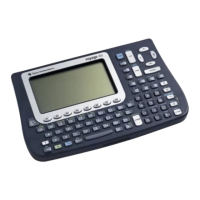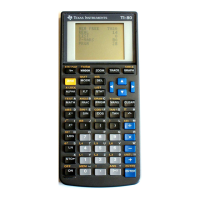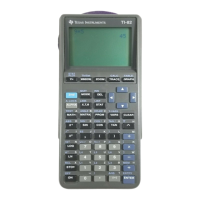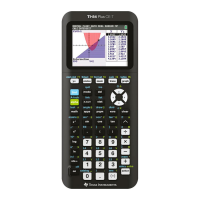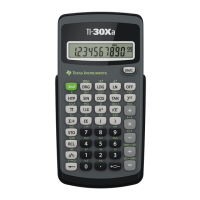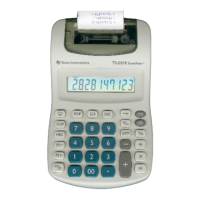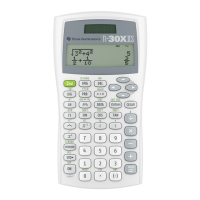solve() shows the same behavior as nsolve(), except that it takes much longer to return the incorrect
roots, and the correct root is often included as one of multiple solutions.
[6.47] Unsigned infinity displays as undef
'Unsigned infinity' is sometimes used in math textbooks to indicate a limit which is +∞ on one side of
the evaluation point, and -∞ on the other side of the evaluation point. This is usually indicated as ±∞.
The 89/92+ return undef (undefined) instead of unsigned infinity, because the majority of courses for
which the calculator was designed do not address unsigned infinity. However, the calculator internally
carries unsigned infinity as a result.
This behavior can be demonstrated as :
1/0 returns undef
abs(1/0) returns ∞, since the absolute value of unsigned infinity is +∞
For another example, consider
returns undef, but
tan
✜
2
returns ∞, since ∞ is the square of unsigned infinity
tan
✜
2
2
(Credit to Paul King)
[6.48] Use R▶
▶▶
▶P () for four-quadrant arc tangent function
✕
The built-in arc tangent function, tan
-1
(), cannot return the correct quadrant of an angle specified by x-
and y-coordinates, because the argument does not contain enough information. Suppose we want the
angle between the x-axis and a ray with origin (0,0) and passing through point (1,1). Since
we have or so
tan
(
✕
)
=
y
x
tan
(
✕
)
=
1
1
✕ = tan
−1
(
1
)
✕ =
✜
4
However, if the ray instead passes through (-1,-1), we get the same result since (-1/-1) is also equal to
1, but the angle is actually . This difficulty was addressed by the designers of the Fortran
(
−3
✜
)
/4
programming language, which includes a function called atan2(y,x) to find the arc tangent of y/x
correctly in any of the four quadrants, by accounting for the signs of x and y.
It is a simple matter to accomplish this in TI Basic with the built-in
R
▶
P
θ
() function, if we account for the
special case (0,0). In fact, it can be done with a single line of TI Basic code:
when(x=0 and y=0,undef,R▶Pθ(x,y))
undef is returned for (0,0), otherwise
R
▶
P
θ
(0,0) returns itself in Radian angle mode, and this
expression in Degree angle mode:
180*R▶Pθ(0,0)/Œ
6 - 81
